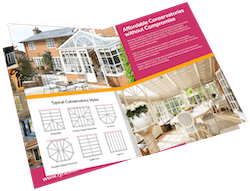Waking up to windows covered in water droplets is more than just an inconvenience. Condensation in windows is a common problem for homeowners across the North East, particularly during the colder months. Left unchecked, it can lead to damp patches, musty smells, and black mould – creating an unhealthy environment and damaging your home.
In this guide, we’ll explain why condensation forms, share practical prevention methods, and discuss when replacement windows might be your best solution.
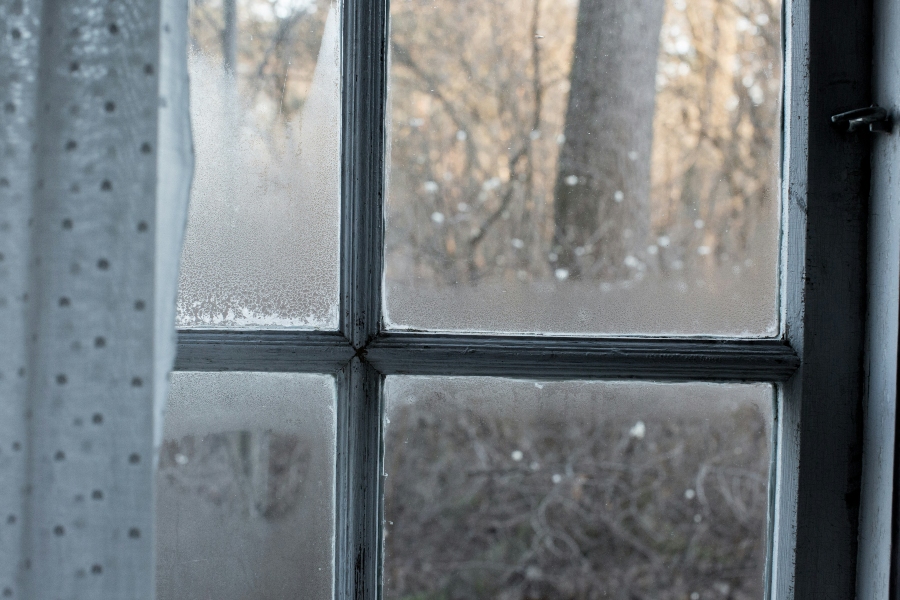
What causes condensation in windows?
Condensation occurs when warm air containing water vapour comes into contact with a cold surface. When the air temperature drops to the dew point – the temperature at which air can no longer hold moisture – droplets of water form on the coldest surfaces in your home, typically your window panes.
During everyday activities like cooking, showering, or drying wet clothes indoors, we release significant amounts of water vapour into our homes. Several factors contribute to condensation problems:
Poor ventilation
Modern homes are increasingly well-insulated, which is excellent for energy efficiency but can trap humid air inside. Without adequate air circulation, excess moisture has nowhere to escape, leading to higher humidity levels and condensation on your windows.
Temperature differences
The greater the difference between room temperature and outside temperature, the more likely condensation will occur. This is why condensation is typically worse in winter when your central heating creates warm air inside whilst the glass panes remain cold from the weather outside.
Failed or outdated window seals
Older windows, particularly single-glazed units or failing double glazing, have poor thermal performance. When the seal fails on double-glazed units, moisture can penetrate between the panes of glass, creating condensation that cannot be wiped away.
High moisture levels
Activities like cooking without using an extractor fan, drying clothes on radiators, or running a tumble dryer without proper venting all increase the amount of water vapour in your home. Even soft furnishings, plants, and simply breathing contribute to moisture levels.
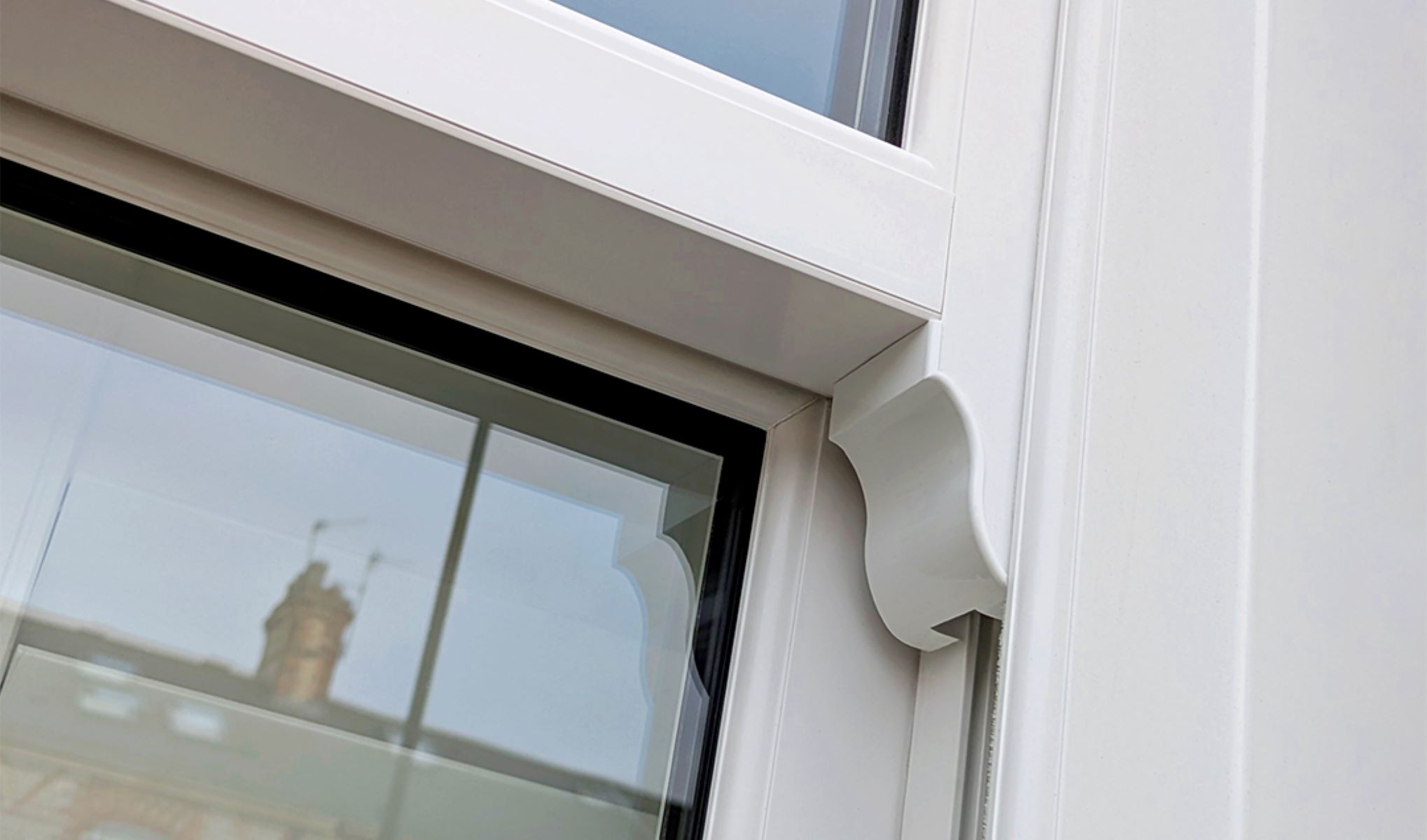
The problems condensation can cause
Whilst occasional condensation might seem harmless, persistent moisture creates several serious issues:
Black mould growth: Excess moisture creates a breeding ground for mould, which appears as a cloud of little black dots or larger patches. Mould releases spores that can cause respiratory problems, allergic reactions, and aggravate asthma.
Damage to window frames: Wooden window frames are particularly vulnerable to rot when exposed to constant moisture. Old, outdated uPVC windows can also suffer from mould growth in corners and seals.
Damp patches: Moisture running down from windows can damage walls, causing paint to peel and wallpaper to lift.
Musty smell: Persistent dampness creates unpleasant odours throughout your home.
Heat loss: Condensation often indicates poor insulation, meaning your heating system works harder and your energy bills increase.
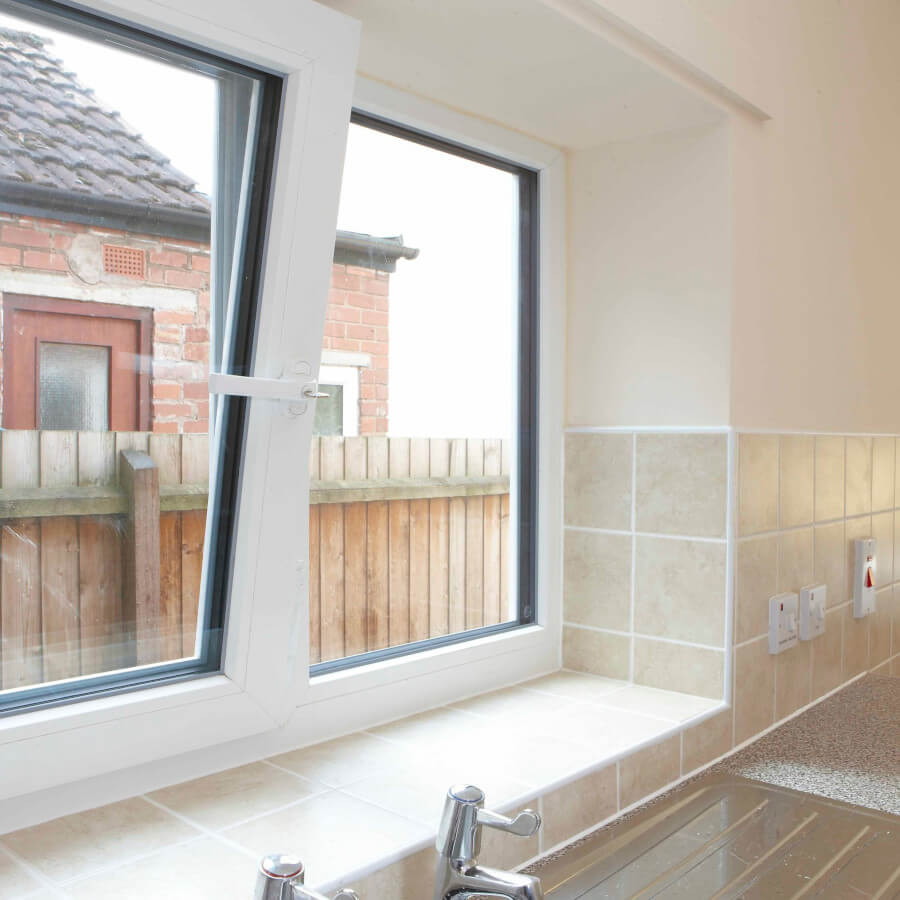
Practical solutions to prevent condensation in windows
Improve ventilation
The best way to reduce condensation is to improve air circulation throughout your home:
- Open windows regularly, even for just 10-15 minutes daily, to allow moist air to escape
- Use extractor fans in bathrooms and kitchens during and after cooking or showering
- Keep internal doors open to allow air to circulate through the rest of your home
- Ensure air bricks aren’t blocked by furniture or debris
- Consider positive input ventilation systems for persistent problems
Reduce moisture at source
Take steps to minimise the amount of water vapour generated in the first place:
- Always use extractor fans when cooking or bathing
- Keep the bathroom door closed when showering to prevent steam spreading
- Dry clothes outside when possible, or use a vented tumble dryer
- Avoid drying wet clothes on radiators
- Cover pans when cooking to trap steam
- Move plants away from windows, as they release moisture
When window replacement is the solution
Whilst the prevention methods above help manage internal condensation issues, they cannot address fundamental problems with your windows themselves. If you have:
- Condensation between the panes of glass
- Old single-glazed windows
- Failing seals on existing double glazing
- Wooden window frames showing signs of rot
- Persistent condensation problems despite good ventilation
Then window replacement is likely your most effective solution. Modern, energy-efficient windows eliminate many condensation problems at their source.
What’s the difference between condensation on windows and condensation between the panes?
Condensation on the inside of windows can be wiped away and is caused by indoor humidity meeting a colder surface. This common issue can usually be resolved with better ventilation and heating. Condensation between window panes, however, means the sealed unit has failed and moisture has entered the air gap. This type of condensation cannot be removed and significantly reduces your window’s insulation performance. When this occurs, window replacement is the only solution.
Will triple glazing eliminate condensation completely?
Triple glazing significantly reduces the likelihood of condensation by keeping the interior surface of the glass much warmer than double glazing. The additional pane creates better insulation, meaning the inside glass rarely becomes cold enough to reach the dew point where condensation forms. However, triple glazing must be combined with proper ventilation to control indoor humidity levels. Even the best windows can’t prevent condensation if your home has excessive moisture and inadequate air circulation.
Modern windows: the long-term solution to condensation
At Tyneside Home Improvements, our range of high-performance windows are specifically designed to prevent condensation problems whilst improving your home’s energy efficiency and security.
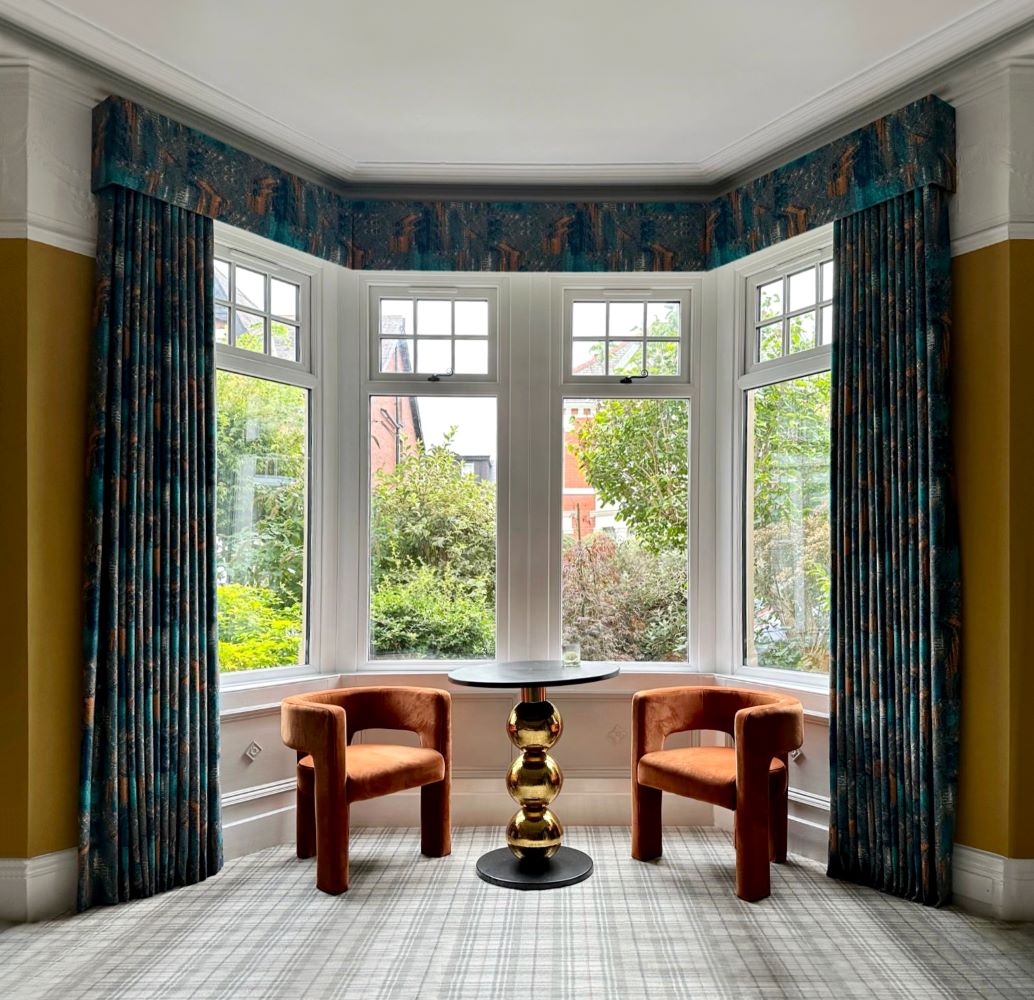
Our uPVC windows are the most popular choice for homeowners across Newcastle and the North East. They feature:
- A-rated energy efficiency as standard, significantly reducing the cold surface area where condensation forms
- Multi-chambered frames that prevent heat loss and maintain warmer glass temperatures
- High-performance double glazing that keeps the interior pane of glass much warmer than single glazing
- Minimal maintenance requirements – they won’t rot like older wooden window frames
- Excellent value, making them a cost-effective solution to condensation problems
Modern uPVC windows are available in various styles including casement, tilt and turn, flush sash, and sliding sash options, all with realistic wood-effect finishes if desired
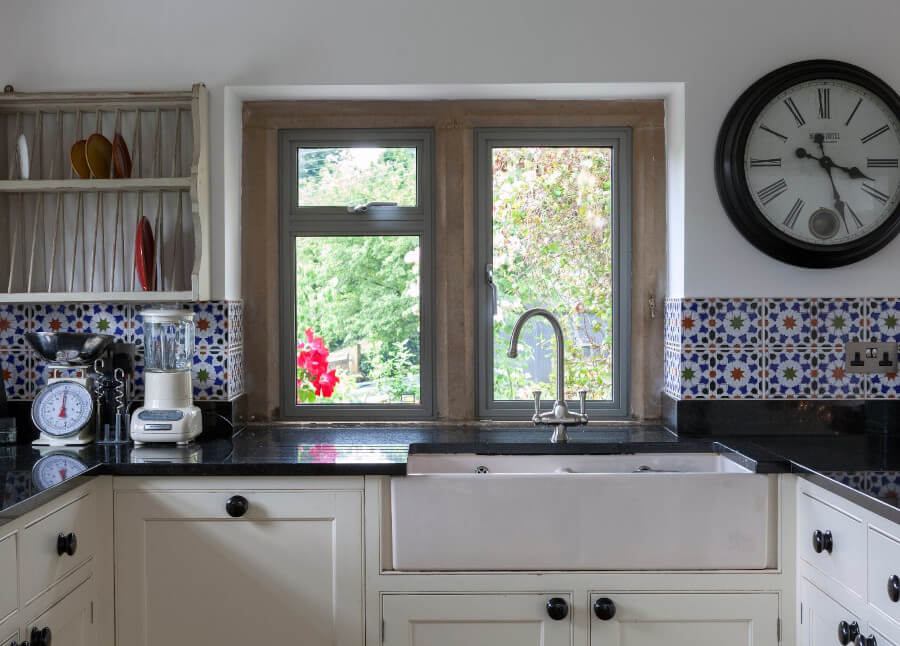
For homeowners seeking sleek, contemporary styling, our aluminium windows offer:
- Thermal break technology that prevents heat transfer through the frame, eliminating a common cause of condensation
- Slim frames that maximise natural light whilst maintaining excellent thermal performance
- A-rated energy performance as standard
- Exceptional durability with an expected lifespan of around 45 years
- Slim sightlines without compromising on insulation
The thermal break in modern aluminium windows makes them vastly superior to older aluminium frames, which were notorious for condensation problems due to cold frame surfaces.

Perfect for period properties or conservation areas, our wood-effect windows combine traditional aesthetics with modern performance:
- The authentic appearance of wooden window frames without the rot and maintenance issues
- All the thermal efficiency benefits of modern uPVC
- A-rated energy performance to prevent condensation
- Suitable for homes where maintaining character is important
Why new windows eliminate condensation
Modern windows from address condensation through several key features:
Warmer internal glass surfaces: Advanced glazing technology means the interior pane remains much closer to room temperature, well above the dew point where condensation forms.
Sealed units: Properly sealed double glazing prevents any moisture entering the air gap between glass panes.
Thermally efficient frames: Multi-chambered uPVC frames and thermally broken aluminium frames prevent cold transferring from outside to inside, eliminating cold surfaces throughout the window.
Trickle vents: Modern windows can incorporate trickle vents that allow controlled ventilation without compromising security or creating draughts.
Better seals: Modern weather seals prevent draughts that can create cold spots and condensation.
Take action against condensation today
Condensation in windows isn’t just a minor inconvenience – it’s a sign that moisture, temperature, and ventilation in your home need attention. Whilst improved ventilation and moisture control help manage the problem, outdated or failing windows are often the root cause.
If you’re experiencing persistent condensation problems, particularly condensation between panes of glass or on the inside of windows despite good ventilation, it’s time to consider replacement windows.
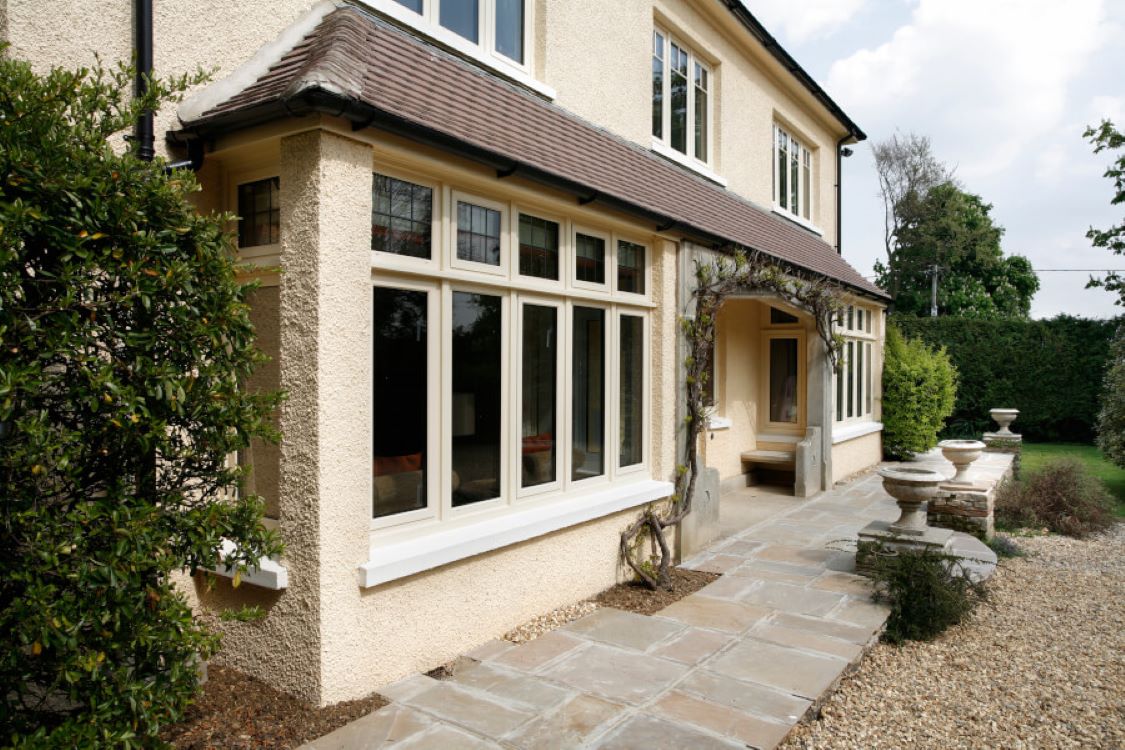
Stop condensation with replacement windows: contact Tyneside Home Improvements today
At Tyneside Home Improvements, we’ve been helping homeowners across the North East solve condensation problems for 17 years. Our range of energy-efficient uPVC, aluminium, and wood-effect windows are designed to eliminate condensation whilst reducing your energy bills and improving your home’s comfort and security.
All our windows come with:
- A-rated energy efficiency as standard
- At least 10-year guarantees
- Expert installation by our experienced team
- Free, no-obligation quotes
Don’t let condensation damage your home or affect your family’s health. Contact Tyneside Home Improvements today for a free quote. Call us on 0191 489 5063 or complete our online contact form.

